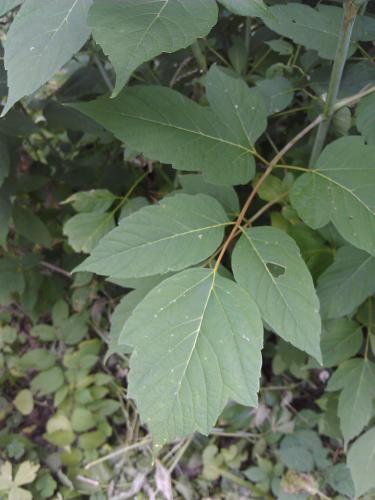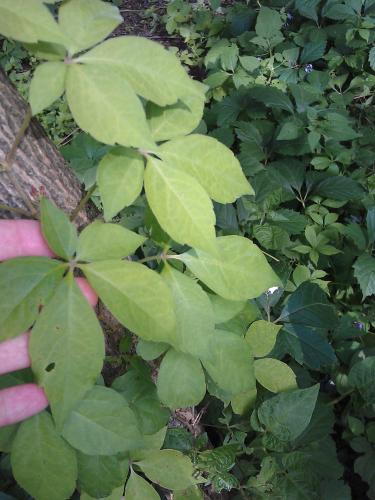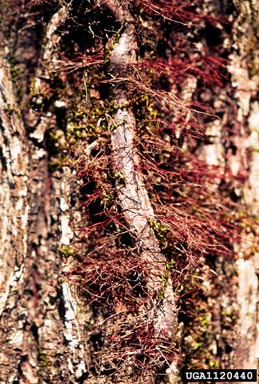Be careful where you spray that stuff!
Using certain herbicides too generously can kill mature, healthy trees.

This summer’s ample rains have encouraged lush growth for most plants in Michigan. This includes some that we find troublesome, like poison ivy (Toxicodendron radicans). Poison ivy is a native vine that, in the right conditions, can grow to shrub-like size and or spread across the ground, creating an almost continuous layer of ankle-high leaves. Because poison ivy is a vine, however, it will also grow right up the trunk of trees. Mature vines are woody and will have fine hairs that anchor the vine to the bark of the tree. Vines can eventually dominate standing trees.
Poison ivy can be found anywhere in the state. Most of us have been taught the old rhyme “leaves of three, let it be” for identification, but many other harmless plants and small trees also fit that description. For example, small boxelder trees (Acer negundo) or raspberries (Rubus species) also can also be three-leaved, but other additional features distinguish themselves from the ivy. See accompanying photos to help distinguish the difference.

Boxelder is a small tree, not a vine. Photo: Georgia Peterson, MSU Extension
Landowners and/or homeowners may want to remove poison ivy, as well as other vines or woody brush that not only pose irritation for people, but can also potentially dominate and overtake desirable trees on their property. There are numerous brand names for herbicides that can control woody brush species, including poison ivy. All herbicides have a label that will list the name and concentration of the active ingredient, e.g., the compound that is toxic to the weed you wish to control. Check the label to be sure that it specifically lists poison ivy as a target. The label will provide the proper rate that needs to be applied to ensure the product is effective, along with other details on proper application procedure.

An instance where finding thorns is a good thing: Raspberries have cane-like main stems with thorns. Poison ivy never has thorns. Photo: Georgia Peterson, MSU Extension
Several common herbicides that are typically used on poison ivy are glyphosate, amitrole, 2,4.D and triclopyr. Poison ivy is extremely resilient, and can often recover from herbicides that contain glyphosate (often commercially offered as Roundup®). Triclopyr products (often found in garden centers under commercial names like Brush-BGon ®) are generally much more effective on poison ivy, but all of these are non-selective on broadleaf plants. In other words, they can kill other plants that may have inadvertently come in contact with the herbicide. Care must be taken to target only the nuisance plants and to avoid allowing sprays to drift to desirable plants.

Although the native Virginia creeper has the same vining and climbing habits as poison ivy, it has five palmately arranged leaves. Photo: Georgia Peterson, MSU Extension
Keep in mind that mature trees can potentially be harmed by triclopyr. Since poison ivy will grow up tree trunks, you may be tempted to spray the leaves and vine on the trunk. This is rarely a good idea. In some cases, the herbicide may move through the outer bark and into the tissue the trees needs to transport water or nutrients. This can severely damage or even kill healthy, mature trees. Wear protective clothing and clip the vine at the base, then “paint” the herbicide directly onto the cut vine. This will allow the chemical to be transported into the roots of the poison ivy plant without affecting other plants.

Poison ivy vines have coarse hairs that anchor them to the tree. Photo: James H. Miller, USDA Forest Service, Bugwood.org
Michigan State University Extension is an active participant in the “Ask an Expert” function. Feel free to pose additional questions about poison ivy or other woody species control through this site.



 Print
Print Email
Email

